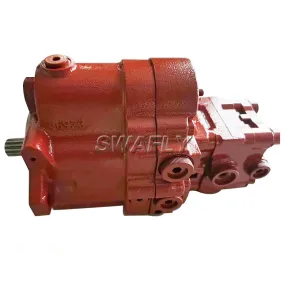How to Match a Hydraulic Pump to a Motor?
Ever wondered how to ensure your hydraulic pump and motor are a match made in engineering heaven? If you've dabbled in the world of hydraulic systems, you know the importance of this dynamic duo working seamlessly. In this article, we'll explore the intricacies of matching a hydraulic pump to a motor, demystifying the process and providing actionable advice for a harmonious partnership.
Understanding Hydraulic Systems
2.1 The Basics of Hydraulic Pumps
Hydraulic pumps are the heart of any hydraulic system, responsible for converting mechanical energy into hydraulic energy. They come in various types, from gear pumps to piston pumps, each with its unique characteristics.
2.2 The Role of Motors in Hydraulic Systems
On the other side of the spectrum, hydraulic motors take the hydraulic energy generated by the pump and convert it back into mechanical energy. Understanding the synergy between these components is crucial for a well-functioning system.
Importance of Matching Pump to Motor
3.1 Efficiency and Performance
Mismatched pump and motor pairs can lead to inefficiencies, affecting overall system performance. A well-matched pair ensures optimal energy transfer and utilization.
3.2 Avoiding Overloading Issues
Matching also prevents overloading issues, safeguarding your components from premature wear and tear. Efficiency and longevity go hand in hand in the hydraulic world.
Factors to Consider
4.1 Flow Rate Requirements
Determining the required flow rate is the first step in the matchmaking process. Understanding the demands of your system ensures you select a pump and motor capable of delivering the necessary fluid volume.
4.2 Pressure Ratings
Equally important is understanding the pressure requirements. Choosing components with compatible pressure ratings prevents potential breakdowns and ensures a reliable system under varying conditions.
4.3 Physical Compatibility
Consider the physical aspects of your components. Size, mounting configurations, and overall compatibility play a crucial role in the successful integration of pump and motor.
Step-by-Step Guide
5.1 Assessing Hydraulic Power Needs
Start by assessing your hydraulic power needs. Understanding the workload helps in determining the necessary power output from the pump and, subsequently, the motor.
5.2 Determining Flow Rate
Calculate the required flow rate based on your system's demands. This forms the foundation for selecting a pump and motor combination that meets your specific needs.
5.3 Understanding Pressure Requirements
Evaluate the pressure requirements of your hydraulic system. Choosing components with compatible pressure ratings ensures a reliable and durable setup.
5.4 Selecting the Right Pump
With power, flow rate, and pressure requirements in mind, delve into the world of pumps. Choose a pump that aligns with your system's needs for optimal performance.
5.5 Matching Motor Specifications
Once the pump is chosen, find a motor that complements it perfectly. Matching specifications ensure a harmonious interaction, preventing issues down the hydraulic pipeline.
Common Mistakes to Avoid
6.1 Neglecting System Compatibility
One common pitfall is neglecting the overall compatibility of the hydraulic system. Ensure all components work together seamlessly to avoid performance hiccups.
6.2 Ignoring Environmental Factors
Environmental conditions can impact the performance of your hydraulic system. Consider factors like temperature and humidity to guarantee reliable operation.


Comments